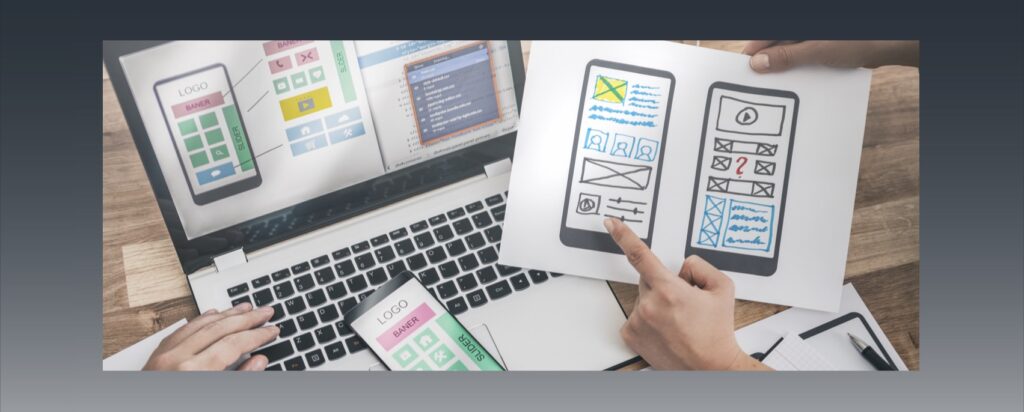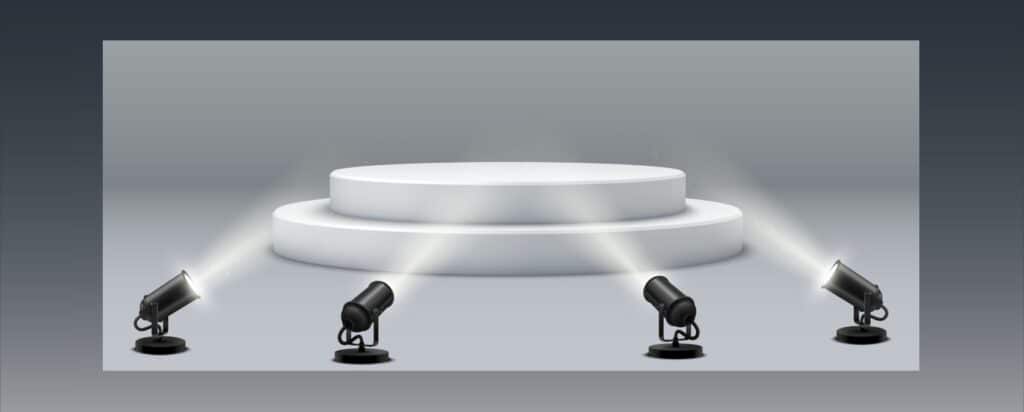A product roadmap template can help you effectively communicate and refine the strategy and vision for your product.
Most successful companies are constantly building and iterating on their products or platforms. As the product changes and grows, the rest of the organization must adapt with it. Each new feature or functionality changes how you sell and market your product. Product tweaks might affect your revenue models, or require you to bring on new team members. External clients or advisors will want to stay informed, as well.
It’s essential that every part of your organization understands where your product is going and the steps required to get you there. That’s where the product roadmap — in its various forms — comes into play.
I’ve been developing B2B SaaS products for nearly 20 years. At York IE, I oversee the development of our platform for strategic growth, Fuel, and help our clients launch and grow their own products. Regardless of size or industry, every company needs strategic roadmaps that help them define and execute on their vision. Making a product roadmap is a collaborative, iterative process that requires constant communication.
Let’s learn how to create a product roadmap and discuss some best practices to get you started. Don’t forget to download our product roadmap template as you start the planning process.
Table of Contents
- What Is a Product Roadmap?
- Types of Product Roadmaps
- How to Create a Product Roadmap
- Product Roadmap Best Practices
- Product Roadmap Template
What Is a Product Roadmap?
A product roadmap is a high-level strategic document that helps companies define their product strategy and lay out their priorities. A well-designed product roadmap establishes a shared understanding of the product vision, the steps needed to achieve it and the timelines associated with those steps.
Your company’s product roadmaps should help align various internal teams — sales, marketing, finance, etc. — around the same organizational goals. That’s because each department will have input and visibility into the roadmap. This plan can also help your external stakeholders and clients stay informed on your product strategy.
I like to think there are three levels of road mapping, each of which is more suitable for certain stakeholders. It’s important to know the differences when you’re making a product roadmap.
Types of Product Roadmaps
The three main types of product roadmaps are:
- horizon planning roadmap;
- feature roadmap; and
- detailed product backlog.
People often use the generic word “roadmap” to describe any sort of planning document. That’s why I like to categorize a roadmap as one of three types. Each type communicates different information for different audiences — and each level is more granular than its predecessor.
Here’s how we define them at York IE:
- Level 1 (Horizon Planning Roadmap): What’s our long-term vision for the product?
- Level 2 (Feature Roadmap): What features do we have to develop to get there?
- Level 3 (Detailed Product Backlog): What are the product backlog items we need to complete to launch those features?
Level 1: Horizon Planning Roadmap
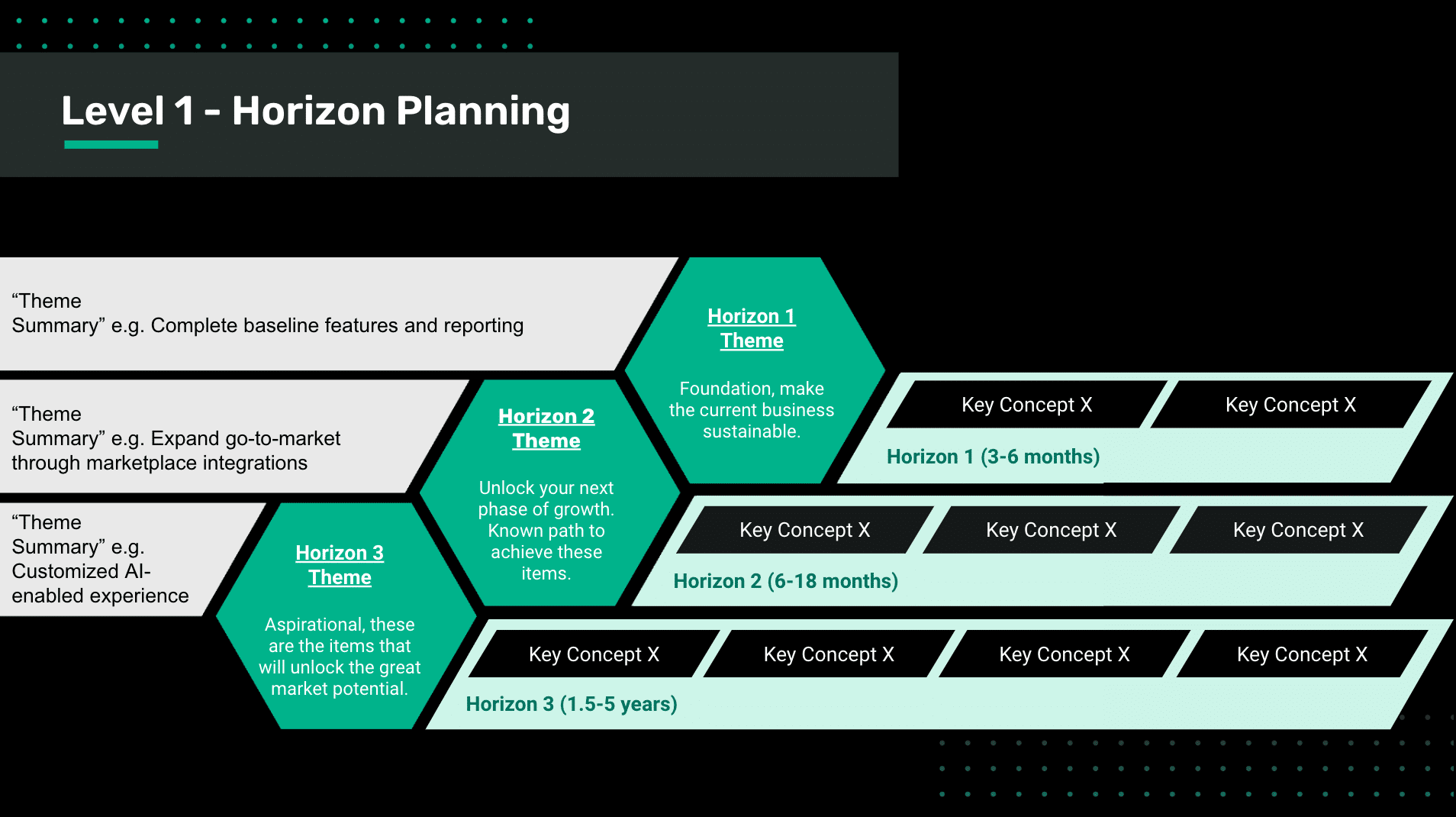
You’ll define your short-, medium- and long-term goals in each horizon. Horizon 1 typically looks at what you’re hoping to accomplish in the next three to six months. Horizon 2 extends six to 18 months and Horizon 3 could outline your vision for the next 18 months to five years. You’ll work collaboratively with leaders across the business to define your horizons and their timelines.
It’s often helpful to assign a theme to each horizon. For example:
Horizon 1:
- Establish immediate needs to enable sales and reach your minimum viable audience.
- Theme: Core Inputs (building the basic features of your platform)
Horizon 2:
- Expand your core offering to continue growth and add value for customers.
- Theme: Optimization (optimizing those features)
Horizon 3:
- Outline the inspirational initiatives that get you closer to market dominance.
- Theme: Data Insights (iterating based on usage data)
Splitting up your vision into horizons helps you ruthlessly prioritize your features. It will help you identify the most critical items within each theme and evaluate what’s most essential for your minimum viable audience.
Horizon planning roadmaps are typically updated once per quarter or once every six months. They’re often built in PowerPoint, Excel or a similar tool that any member of your organization can use.
Level 2: Feature Roadmap
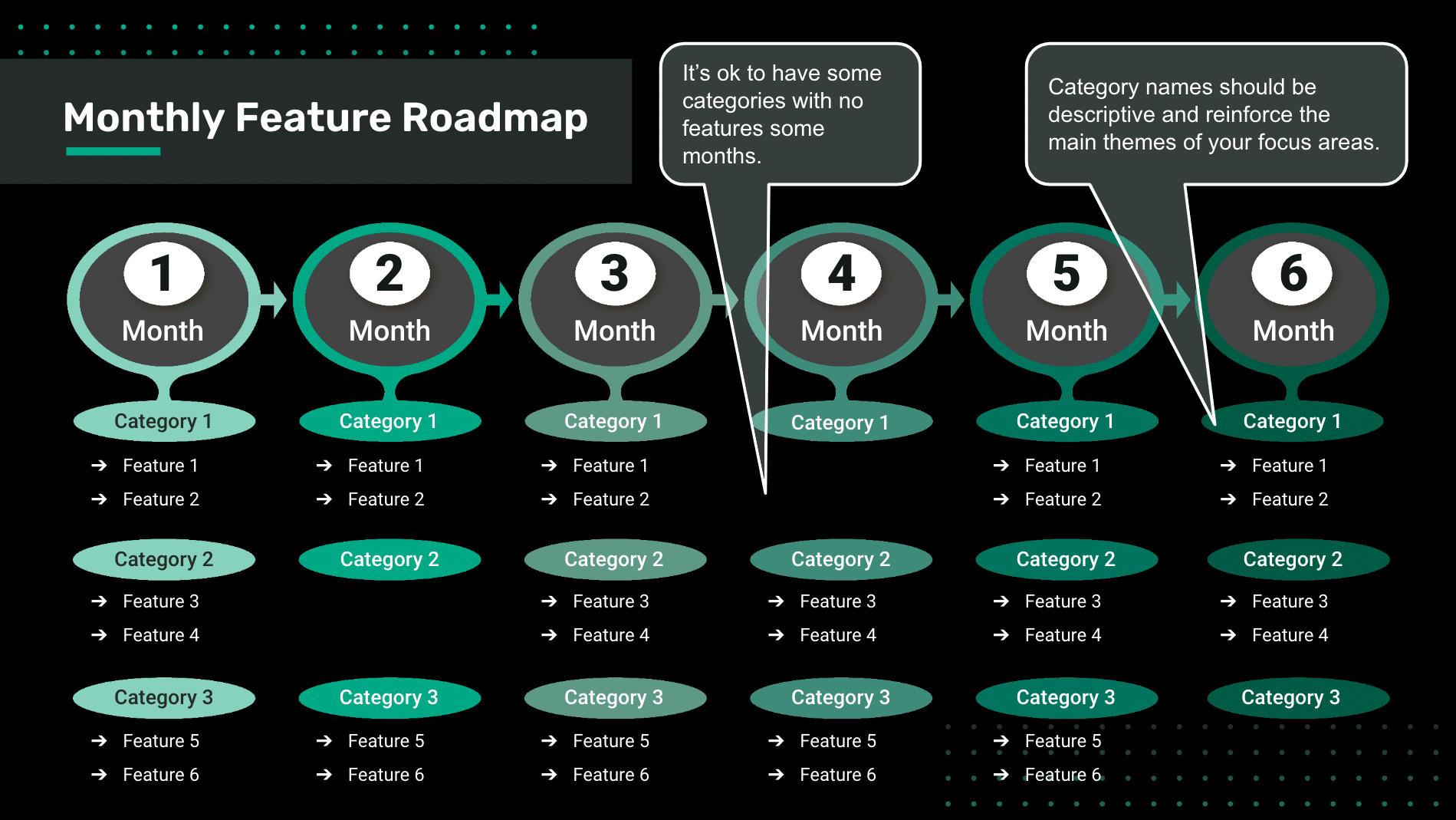
A feature roadmap looks similar to a Gantt chart or schedule. It’s helpful to use swim lanes, which show the sequencing of work within each category. Remember: You’re communicating when the features are launching, not when the product team is building them. It’s important that marketing, sales and other departments have input into which features are launching and when.
Growing tech companies should update their feature roadmaps on a monthly basis. Larger companies might do so quarterly. This roadmap could be built in PowerPoint or Excel, but I’d recommend migrating it to a product management tool such as Notion or Jira if you can.
Level 3: Detailed Product Backlog
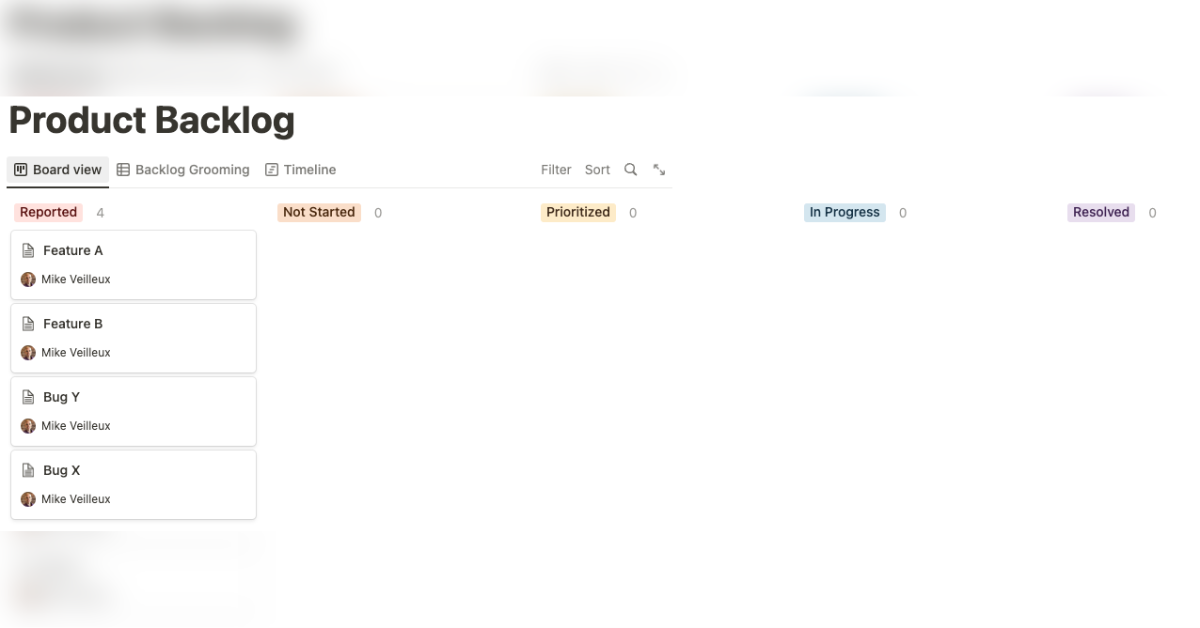
By now, you’re working entirely in your project management tool. You’ll size each backlog item and allocate it to a team member. In most cases, you won’t be able to plan your product backlog more than one or two months in advance. (Agile methodology requires flexibility!) Product backlogs are often updated weekly or bi-weekly as part of your sprint ceremonies.
How to Create a Product Roadmap
The steps to create a product roadmap are:
- define your product vision;
- identify your goals and objectives;
- determine your timeline;
- identify your key initiatives;
- prioritize your initiatives;
- assign ownership; and
- review and refine.
1. Define Your Product Vision
Begin with Level 1, horizon planning. When making a horizon planning roadmap, start by defining the overarching goal of your product. This should be a high-level statement that captures the essence of what you’re trying to achieve. A product roadmap template can help you get started.
2. Identify Your Goals and Objectives
Once you have a clear vision, you need to break it down into specific goals and objectives. These should be measurable and achievable within a specific timeframe.
3. Determine Your Timeline
Based on your goals and objectives, you need to determine a realistic timeline for your product roadmap. This should include milestones and deadlines for each phase of development..
4. Identify Your Key Initiatives
This is when you build out your Level 2 feature roadmap. Identify the key initiatives that will help you achieve your goals and objectives. These should be specific projects, features or improvements that will move your product forward. Keep your feature updates within swim lanes to ensure the information is easily digestible.
5. Prioritize Your Initiatives
Time to transition to Level 3: product backlog. Once you have a list of initiatives, you must prioritize them based on their importance and impact on your minimum viable audience. This will help you focus on the most critical tasks first.
6. Assign Ownership
Each backlog item should have a clear owner who is responsible for driving it forward. This will help ensure accountability and keep everyone on track. Part of this step is sizing, in which you allocate how long each backlog item will take to complete amidst your sprint.
7. Review and Refine
Review and refine your product roadmap regularly. This will help you stay on track and adjust your plans as needed. You should really be seeking feedback and input from your peers at every step in the process. Helpful insights from marketing, sales, finance or any other department could inform how you iterate as you move across your roadmaps. A change to your horizon planning will trickle all the way down to your backlog, so it’s important to be adaptable.
Product Roadmap Best Practices
Some important product roadmap best practices are:
- Share and collaborate on your roadmaps.
- Constantly iterate.
- Take a storytelling approach.
Share and Collaborate on Your Roadmaps
No successful company is making a product roadmap in a vacuum. The entire process should be collaborative from start to finish.
The product manager is responsible for driving the roadmap and gathering input from across the business. They’re also responsible for synthesizing feedback from the leadership team to the rest of the organization. Bring them up to speed on why you made these changes and keep everyone updated on the evolutions and interactions of the roadmap.
A lot of this feedback is gathered ad-hoc. You might get insights from a formal product roadmap review, but some of the best ideas are gathered from water cooler conversations or Slack messages. Continuously work the room for input, validation and thoughts.
Constantly Iterate
Because you’re consistently iterating your product, a roadmap should evolve continuously. I’m not saying you should be tweaking your horizon plan every single day, but it’s good to maintain flexibility.
I’ve made a habit of periodically saving old versions of roadmaps. While I always maintain a living document, it’s nice to look back at previous versions to see where we’ve iterated — and how well we’ve stuck to our initial goals.
Take a Storytelling Approach
Learning how to create a product roadmap includes mastering the art of product storytelling. You must connect your vision to your roadmaps and explain the strategic steps you’re taking to make that vision a reality. You’re essentially telling the story of your product journey.
If the product manager has a productive conversation with the head of sales, they need to tell the story of the product’s evolution through the roadmap. This ensures that the valuable information from smaller conversations is captured in a living document that everyone can access.
Product Roadmap Template
If you’re making a product roadmap, it’s best to start immediately. Because road mapping is such an iterative and collaborative process, you’ll be better off the sooner you start conversing with your team.
Don’t let perfection get in the way of progress. Download our product roadmap template, grab your leadership team and start aligning your organization around your product vision. Each new version of your roadmap will get you closer to your ultimate goals.



